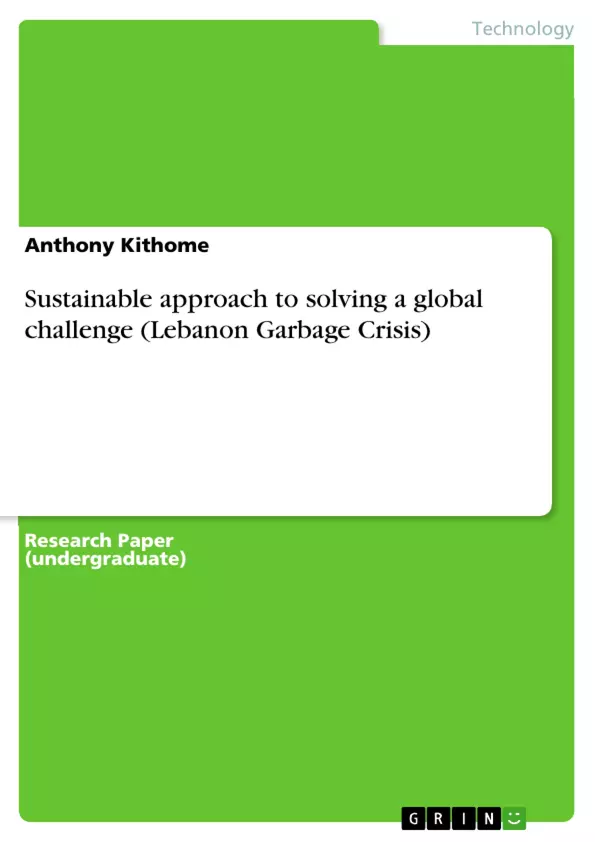The modern world is fast growing and in particular with the widespread urbanization growth. This has as a result exerted massive pressure on the available amenities allocation. Specifically, major urban areas around the world are currently unable to manage solid waste sufficiently and in the most sustainable manner. In that regard, such targets like the Millennium Development Goals specially aimed at boosting clean water and sanitation within cities, towns and villages have proved unfeasible.
A typical example of such a case includes the Lebanon’s garbage crisis that has has attracted the global attention with majority of the instituted solutions indicating unsatisfactory results. The problem has evidently been on high increase despite the intervention measures. The recent closure of its main landfill has consequently disrupted treatment, disposal and storage processes causing high accumulation of trash within streets. Besides, the inconveniences caused by the move has seen the proliferation of informal dumping sites all over the municipalities. The effects are evident threatening the overall wellbeing of people and the environment in general.Blocked roads systems due to the overflowing garbage piles have likewise inconvenienced humanitarian interventions especially amongst the most vulnerable areas.
Inhaltsverzeichnis (Table of Contents)
- Introduction
- Main landfill (The Naameh landfill)
- Background information
- Sustainable solution
- Smart technology
- Sustainability Design Criteria
- Zen Robotics Recycler (ZRR)
- How it works…
Zielsetzung und Themenschwerpunkte (Objectives and Key Themes)
This text aims to explore a sustainable approach to addressing the pressing global challenge of Lebanon's garbage crisis, using the example of the Naameh landfill. It highlights the consequences of inadequate waste management practices and explores potential solutions focusing on smart technology and sustainable design criteria.
- The urgent need for sustainable waste management solutions in urban areas
- The impact of the Naameh landfill closure on Lebanon's waste management system
- The challenges and complexities of finding sustainable solutions to the garbage crisis
- The role of smart technology and sustainability design criteria in addressing the problem
- The importance of community involvement and participation in finding solutions
Zusammenfassung der Kapitel (Chapter Summaries)
- Introduction: This chapter introduces the global challenge of waste management in rapidly urbanizing areas, highlighting the urgency of finding sustainable solutions. The Lebanon garbage crisis is presented as a compelling example of the failure to address this challenge, showcasing the consequences of inadequate waste management practices.
- Main landfill (The Naameh landfill): This chapter focuses on the Naameh landfill, the main dumpsite for Beirut and Mount Lebanon, and its closure in 2015. It delves into the background information, highlighting the history of the landfill, its capacity issues, and the environmental and social concerns associated with its operation.
- Background information: This chapter provides a detailed description of the Naameh landfill, its location, and its history. It examines the landfill's capacity, the types of waste it received, and the environmental impact of its operation. The chapter highlights the unsustainable practices employed at the landfill and the growing concerns regarding its impact on the surrounding environment and communities.
Schlüsselwörter (Keywords)
This text focuses on the key themes of sustainable waste management, smart technology, sustainability design criteria, the Lebanon garbage crisis, the Naameh landfill, and community involvement in finding solutions. It explores the challenges and opportunities presented by the crisis and highlights the importance of innovative approaches to address this global challenge.
- Arbeit zitieren
- Anthony Kithome (Autor:in), 2017, Sustainable approach to solving a global challenge (Lebanon Garbage Crisis), München, GRIN Verlag, https://www.hausarbeiten.de/document/421399


